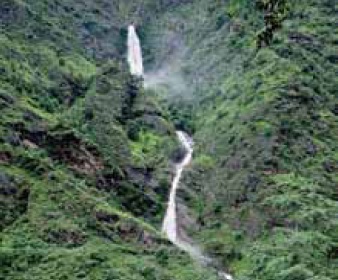ESMAP’s work on energy access, including activities implemented by the World Bank regional energy units and those funded by AFREA, have influenced financing; informed countries policies and strategies; increased client capacities; and generated innovative approaches in the developing world.
|
Nepal: A Monitoring and Evaluation (M&E) Tool to Better Demonstrate Energy Access Results
|
ESMAP assisted in the establishment of a web-based monitoring and evaluation system.
Overview
 AEPC is Nepal’s primary institution dedicated to developing and promoting renewable and alternative energy technologies. AEPC has been implementing a program of projects encompassing micro/mini-hydro, solar energy, water mills, biogas, and improved cook stoves. Most of AEPC’s program is donor funded and the institution has been facing growing pressure to demonstrate the relationship between financial and technical inputs with physical outputs and long-term welfare outcomes.
AEPC is Nepal’s primary institution dedicated to developing and promoting renewable and alternative energy technologies. AEPC has been implementing a program of projects encompassing micro/mini-hydro, solar energy, water mills, biogas, and improved cook stoves. Most of AEPC’s program is donor funded and the institution has been facing growing pressure to demonstrate the relationship between financial and technical inputs with physical outputs and long-term welfare outcomes.
Scope and Recommendations
ESMAP, through the World Bank’s energy unit in the South Asia region supported a technical assistance activity that contributed to increase the capacity of the Nepalese Alternative Energy Promotion Center (AEPC) to establish a M&E framework to monitor and evaluate its renewable energy program. The M&E framework incorporates key performance indicators covering the results chain of projects: from inputs to impacts through outputs and outcomes.
The framework is supported by a web-based management information system (MIS) to regularly generate reports and dashboards based on monthly and quarterly program data. In addition, a baseline survey of beneficiary outcomes was carried out against which future improvements can be measured. A detailed operational manual of the M&E system for both users and administrators was developed and a number of training sessions were organized for the AEPC’s M&E cell.
Results and Outcomes
Increased Client Capacity: ESMAP’s support enabled AEPC to establish priorities, set targets and allocate resources. The system-generated reports allowed AEPC to make informed decisions and devise appropriate solutions. At the completion of the activity, AEPC was equipped with not only a state-of-the-art monitoring system to track progress and demonstrate the impacts of its program, but also with trained staff who can sustainably manage and update the system.
Related Links
- M&E in Practice: Micro-hydro Projects in Nepal
- Power and People: The Benefits of Renewable Energy in Nepal
- ESMAP Portfolio Reviews